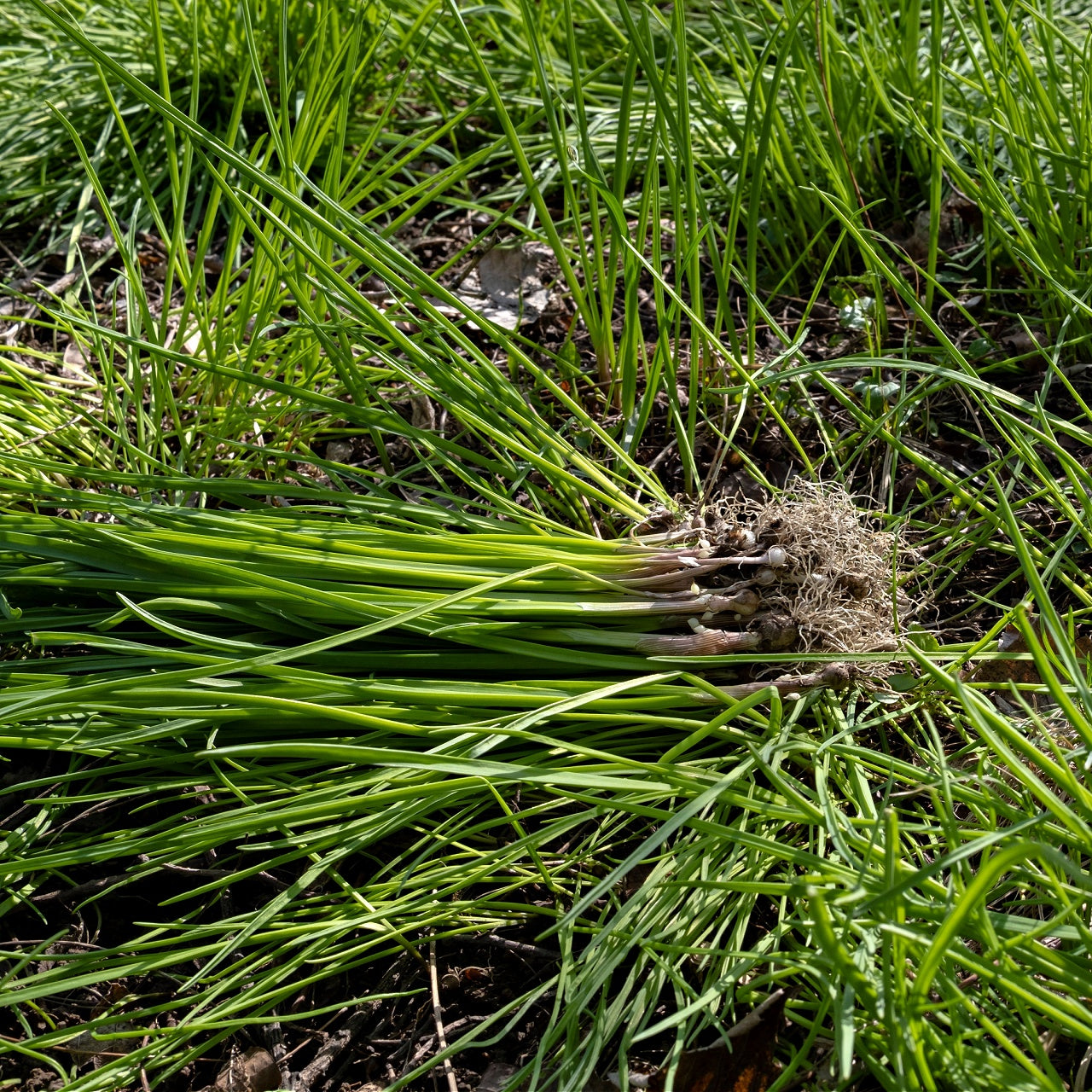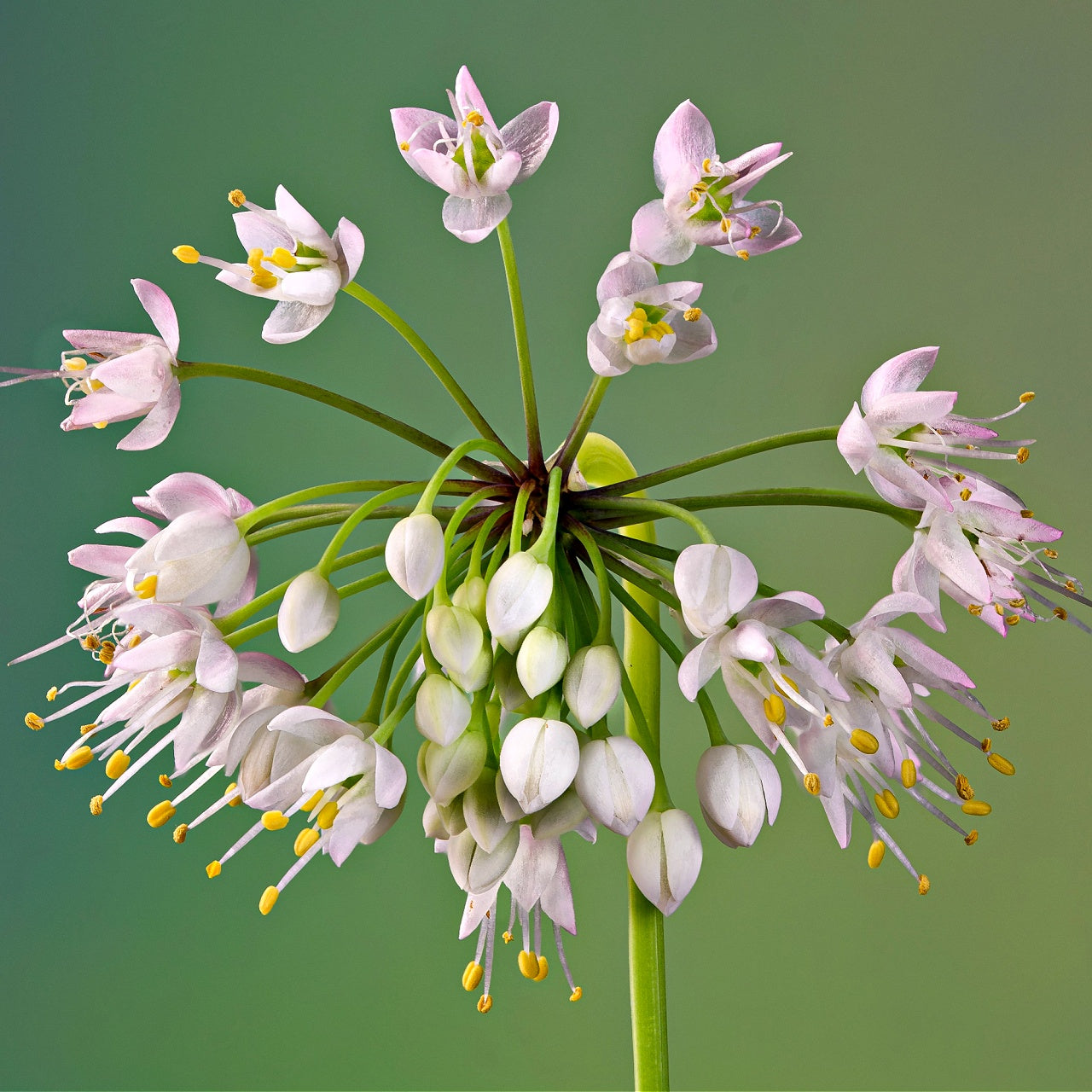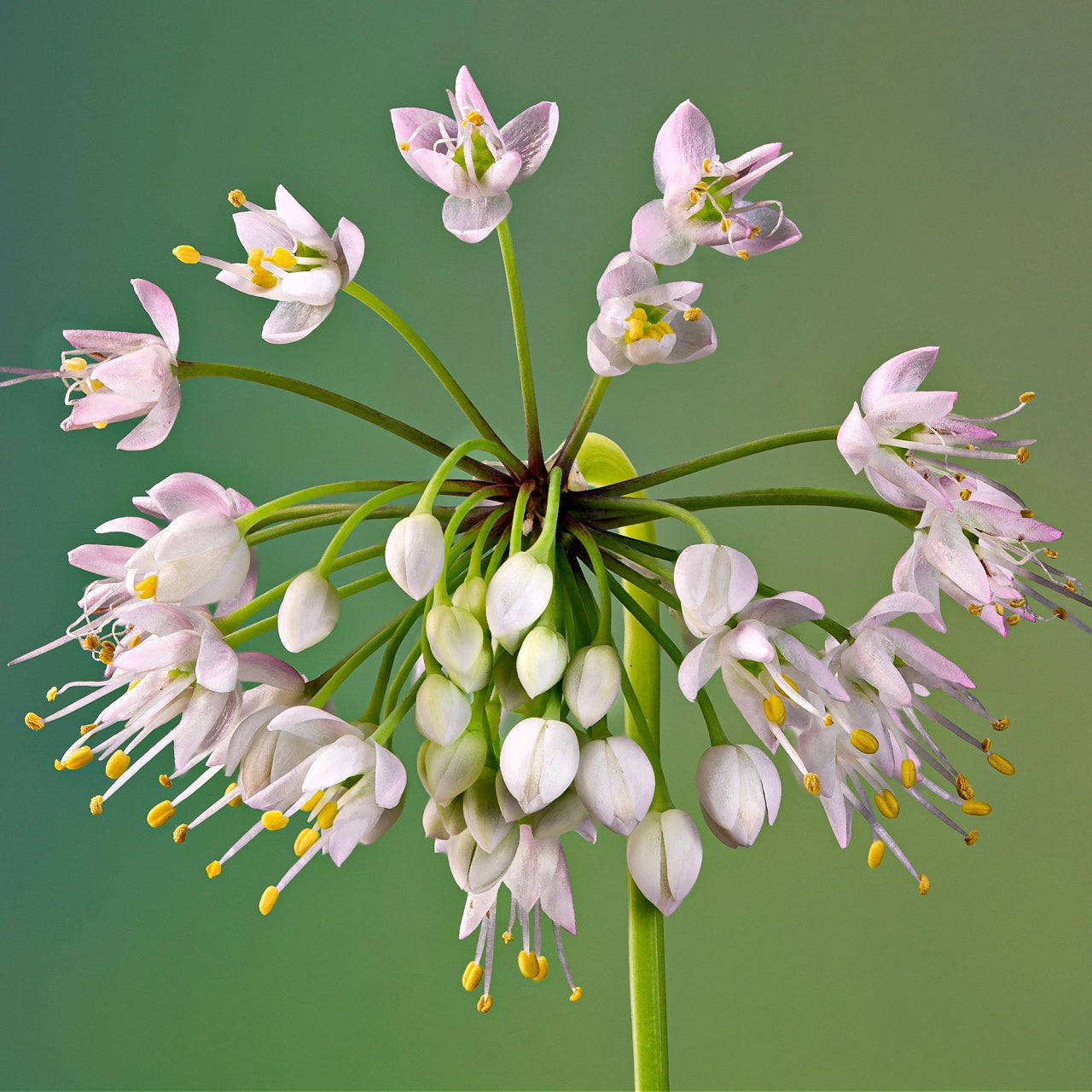


Removes & Absorbs Toxins
Improves Air Quality
Low maintenance & easy to grow
Buy Wild Garlic Plants Online Wholesale
Wild garlic plants are a perennial native to Europe and Asia. It thrives in moist, shaded woodland areas, often forming extensive colonies. It is recognizable by its broad, lance-shaped leaves, which emerge in early spring. It typically grows to about 20-50 cm in height, producing small, white, star-shaped flowers that bloom from April to June.
The Stunning Foliage Of Wild Garlic Plants
Its most distinctive feature is its bright green, smooth leaves, which can grow up to 25 cm long. The foliage is placed in a basal rosette, giving it a lush, leafy appearance. When crushed, the leaves emit a strong, characteristic smell, which helps identify it in the wild. The flowers, borne on a stalk separate from the leaves, form a loose umbel and add a delicate, ornamental touch to its appearance.
This Wild Plant Loves Damp Acidic Soil
It prefers damp, slightly acidic soils and is commonly found in deciduous woodlands, alongside streams, and in shaded hedge banks. It thrives in areas where the soil is rich in organic matter, often forming dense carpets that can dominate the forest floor. It is well-suited to the temperate climates of its native regions and can be found from lowlands to upland areas.
One of the remarkable aspects of this perennial is its growth cycle. It emerges early in the spring, benefiting from the light that reaches the forest floor before the tree canopy fully develops. When the trees have leafed out, and the light becomes scarce, it has typically completed its life cycle, with the leaves dying back by mid-summer. This early growth strategy allows it to coexist with other woodland plants without competing for light during the peak growing season.
How this Plant Spreads
It spreads primarily through its bulbs, which form dense clusters underground. These bulbs can produce new shoots, leading to the formation of large colonies over time. It can also spread through seed scattering, although this method is rare. The seeds are often spread by ants, which are attracted to the elaiosome, a fatty structure attached to the seed.
It can be an attractive ground cover for shaded areas in a garden setting. It is relatively low-maintenance, requiring little more than adequate moisture and shade to thrive. Gardeners appreciate its naturalization ability, creating a lush, green carpet in early spring. However, it is essential to manage its growth to prevent it from becoming invasive, as it can easily outcompete other plants if left unchecked.
Bees And Butterflies Love This Wild Plant
Its ecological benefits are noteworthy. It blooms early, providing nectar and pollen for bees and butterflies when other food is scarce. Its dense foliage helps reduce weed growth in gardens, meaning fewer chemical herbicides are needed.
In summary, these perennial plants are a resilient and attractive type vital to its natural habitat. Its early growth, blooming period, and ability to form dense colonies make it valuable for wild and cultivated landscapes. Proper management ensures it remains a beneficial ecosystem component without becoming overly dominant.
If you want robust flavor, use this perennial. It’s actually a type of hardneck garlic, which is known for being strong and aromatic. Each plant forms a nice garlic bulb, and that bulb consists of multiple garlic cloves—perfect for seasoning or roasting, really. It’s easy to grow in your garden, too. The Wild Garlic is super valuable for chefs and home cooks who want fresh flavor.
This Is How Your Plants Will Look upon Delivery
Bloom Season
Bloom/Foliage Color
White
Shipping date depends on the date displayed and chosen when you order from the product's page.
We do not offer warranties on products after 5 days past receiving your plants.
By signing up, you agree with our privacy policy.





